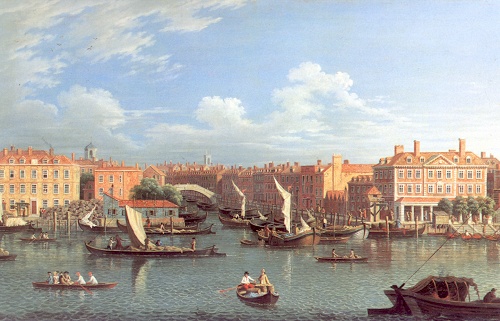Thomas Chilcot was born in Bath around 1707 and during his lifetime never appears to have strayed very far from the city. In 1721 became a pupil to the Bath Abbey organist Josias Priest. Following Priest’s death in 1725, the 18 year old Chilcot took over his position, which he then held for the rest of his life.
In 1729 he married Elizabeth Mills. They had seven children; four surviving. Twenty years late, following his wife’s death, he married Anne Wrey
Chilcot was predictably very active in the musical life of Bath and surrounding areas as organist and teacher. His most famous pupil being the composer Thomas Linley.
He also had a business side-line of renting out musical instruments. He was a founder member of the Society of Musicians. He owned a sizable music library which included Handel manuscripts which were later sold at auctions in 1767 and 1774.
His first six keyboard concertos which were published in 1765 each follow the three-movement pattern of Vivaldi and are said to owe much to the style of the then popular harpsichord sonatas of Domenico Scarlatti. They were the first English keyboard concertos to state that they were specifically for the harpsichord without additionally mentioning the organ.
The second set (Opus 2) were also dated 1765 but were not published until after his death.
No specific reference has been found to link Chilcot’s 12 English Songs to performances at any of the pleasure gardens in London. However, their style and structure would seem to make it probable that they were written with venues such as Vauxhall, Ranalagh and Marylebone Gardens in mind.
Chilcot died on 24th November 1766. He and his wife Anne are represented on a memorial tablet in the transept of Tawstock Church, near Barnstaple.
His surviving works are:
6 Suites of Lessons for harpsichord (Published London, 1734).
12 English Songs with their Symphonies, (Published 1744).
2 sets of 6 Concertos for harpsichord (Published London, 1765).

